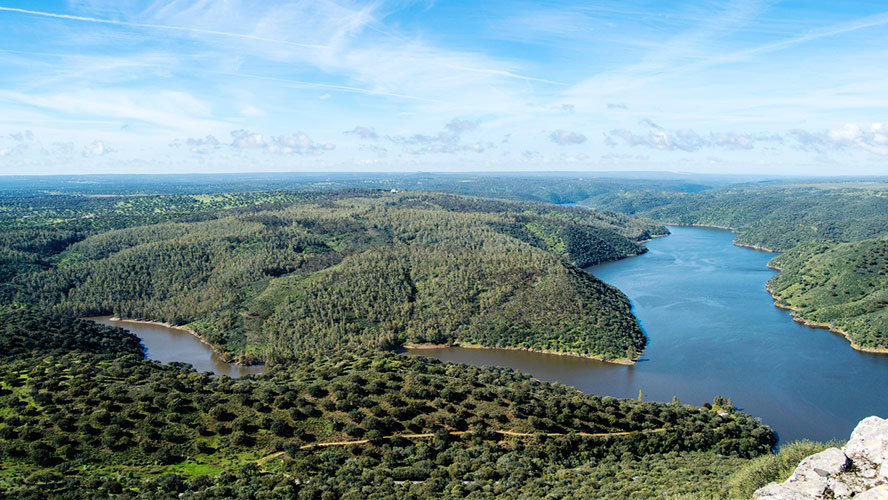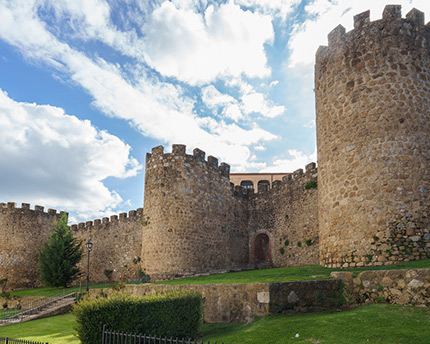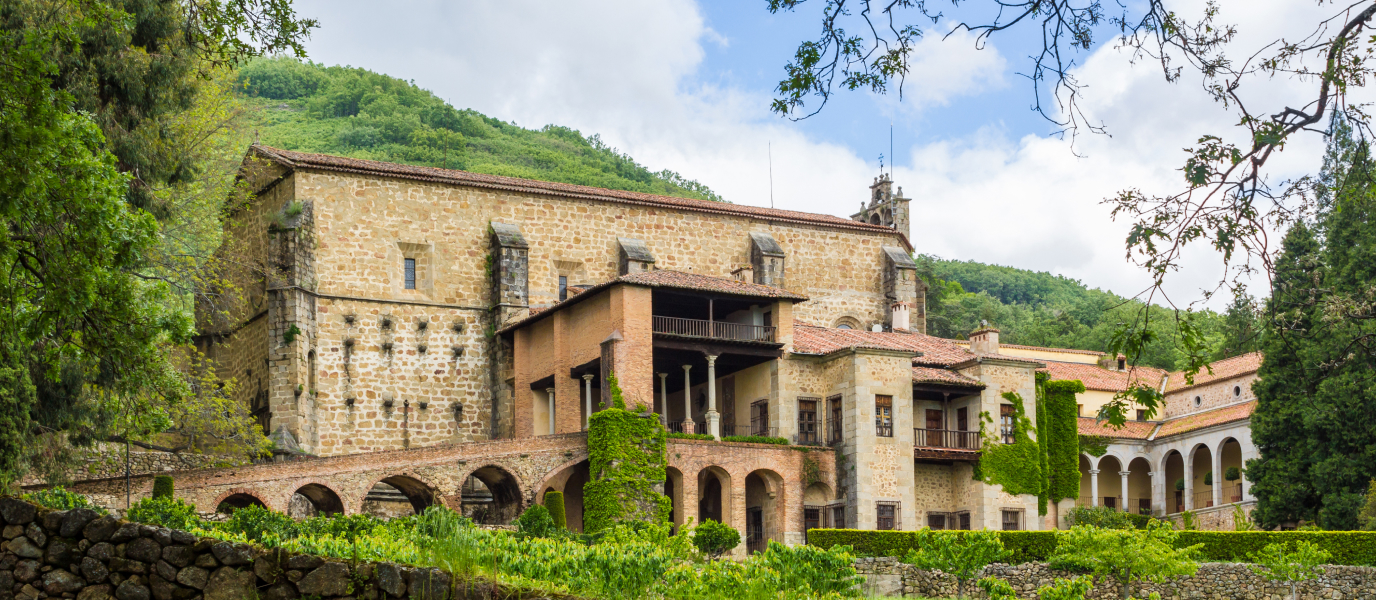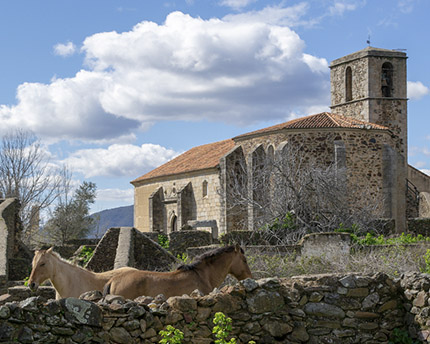A land of conquistadors par excellence, Extremadura is steeped in history, and has amazing natural scenery and a rich historical heritage. Several of the cities and natural landscapes in its provinces have been recognised by UNESCO as World Heritage Sites. Cáceres and Badajoz. Mérida, Cáceres and the Monfragüe National Park are all examples of the rich heritage of Extremadura. If you are planning a trip to explore Extremadura, below we give you the information you need to get to know the region with little effort.
Cáceres
Cáceres is a true gem. It is a place that appears to have been frozen in time, retaining the essence of the hugely important medieval and Renaissance city it once was. Its monumental complexes were declared World Heritage Sites by UNESCO in 1986. It is a city full of history and legend, squares, palaces, narrow streets and walls. Many different cultures have settled here, and all have left their particular mark.
So in Cáceres, you can admire Upper Paleolithic cave paintings in the Cueva de Maltravieso, enter the city through a Roman or Baroque style gateway, walk around the old Jewish quarter, catch a glimpse of an Almohad tower, or stumble across a Mudejar façade right next to a Renaissance mansion. The Historic Quarter embraces a range of cultures that invests it with an incredible beauty.
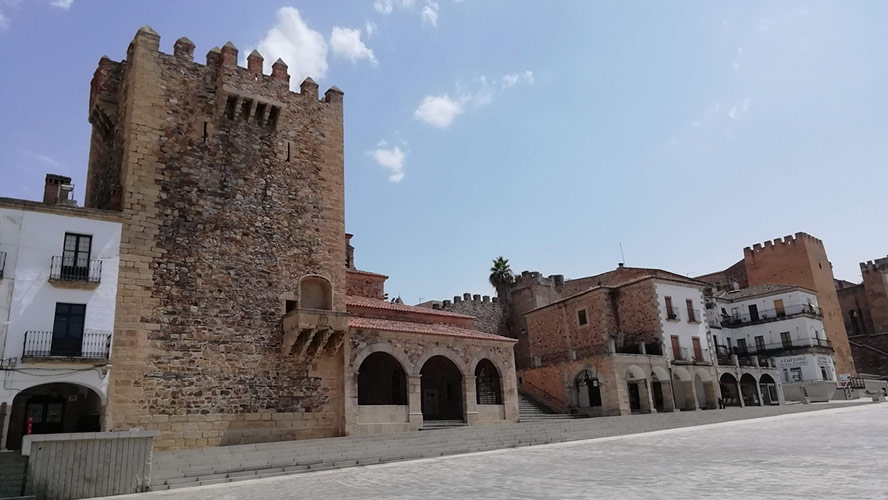
It is so spectacular that it was even selected as the location for filming the most acclaimed television series of recent times, Game of Thrones. You won’t want to miss the Plaza Mayor, the Estrella Archway, the Bujaco tower, the Santa María Co-cathedral, the Veleta palace or the Golfines palace. But even more surprises lie in store for you as you wander through the streets and squares of the historic quarter.
Mérida
Mérida is popularly known as ‘Little Rome’. A well-deserved sobriquet, as this is possibly the Spanish city with the most Roman remains. So much so, that while you are wandering around the fashion boutiques or the bars, you can suddenly stumble upon a Roman temple as you turn a corner.
The Festival of Mérida provides a means to enjoy a summer evening of open-air theatre in a Roman theatre dating back over 2,000 years. And you can cross a Roman bridge, at 750 metres the longest in ancient times, while beneath your feet roar the waters of the river Guadiana. Mérida is predominantly Roman, but it is also Arab, as it retains a ninth-century, Moorish fortress — the oldest Muslim fortification in the Iberian Peninsula. The archaeological remains have designated a World Heritage Site by UNESCO.
So your unmissable encounters are with the Roman Theatre and Amphitheatre and the National Museum of Roman Art. But neither will you want to miss the Temple of Diana, the Los Milagros aqueduct or the Santa Eulalia Basilica.
Badajoz
The city of Badajoz lies on the border with Portugal. In the past, its geographical location led to battles for control of the region, and so you will find the defensive structures that were built to protect the city. Badajoz has been home to many different cultures, although the city as we now know it, was founded in the year 875 A.D. by the Muladi, Ibn Marwan.
Its Arab past gives Badajoz a distinctive character, as one of its main attractions is the citadel, the Alcazaba del Cerro de la Muela, an Artistic and Historic Monument of great beauty, which remains in a perfect state of preservation. The Alcazaba is an oval-shaped, walled complex with defensive towers, the most prominent of which is the Espantaperro tower, which served as the inspiration for Seville’s Torre del Oro [Golden Tower].
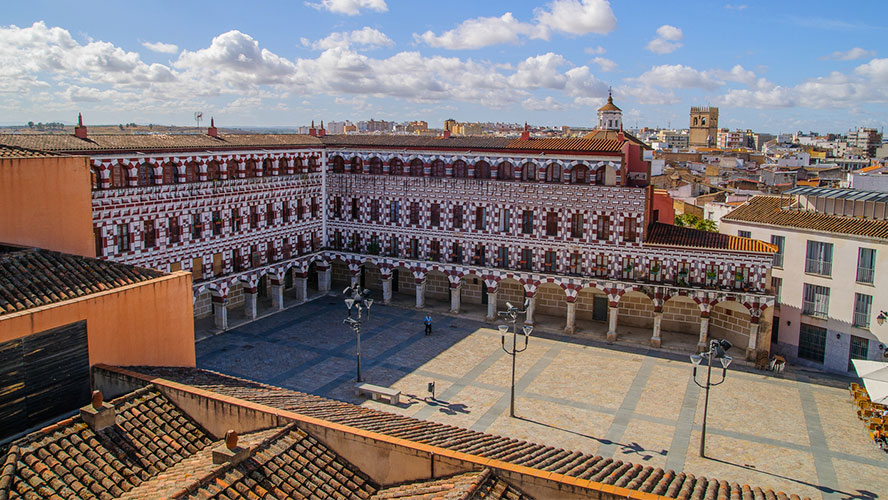
Other points of interest include the palace of the Counts of Roca, which houses the Provincial Archaeological Museum, the Plaza de San José, the Plaza Alta and the Plaza de España (home to the Cathedral of Juan Bautista), the Puerta de Palmas and the church of San Agustín.
Plasencia
Alongside the Valle de Jerte, to the north of Cáceres, lies the city of Plasencia, with its lovely historic quarter. The city we see today has a medieval configuration, although it was also occupied by the Celts and the Romans. The best way to explore Plasencia is to start at the Plaza Mayor, and from there to meander through the narrow streets where you will find mansions, monasteries and churches. You can also see stretches of the walls and the entrances to the city that still remain from the old twelfth-century city wall, the Cathedral, San Nicolás square with the palace of the Marquesas de Mirabel and Plasencia’s aqueduct.
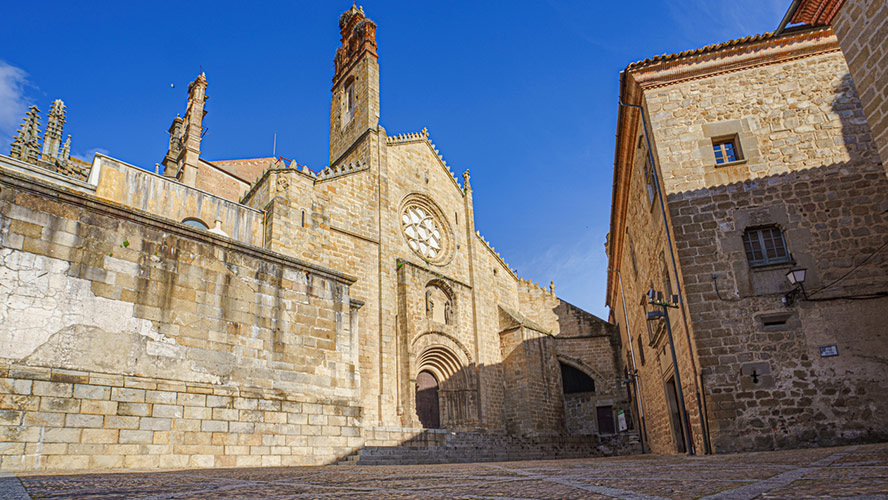
Trujillo
Located in the province of Cáceres, Trujillo is a town with a special charm thanks to its history. It has a noble architectural heritage, as it was once the cradle of men who conquered and colonised America. This was the birthplace of Francisco Pizarro, but it was also the home of many famous figures of the Modern Age, including Piedras Albas, the Chávez Cárdenas family and the Pizarro Orellana de Santa María family.
Pizarro is unquestionably the town’s favourite son, as the statue of him in the Plaza Mayor, mounted on his horse, is probably Trujillo’s most photographed monument. On the hill known as Cabeza del Zorro stand the city walls and the castle, a huge fortress built by the Caliphate of Córdoba. From here you can enjoy fantastic views of the natural landscape that surrounds Trujillo. Also worth a visit are the three parish churches: Santa María la Mayor, San Martín in the Plaza Mayor and San Francisco.
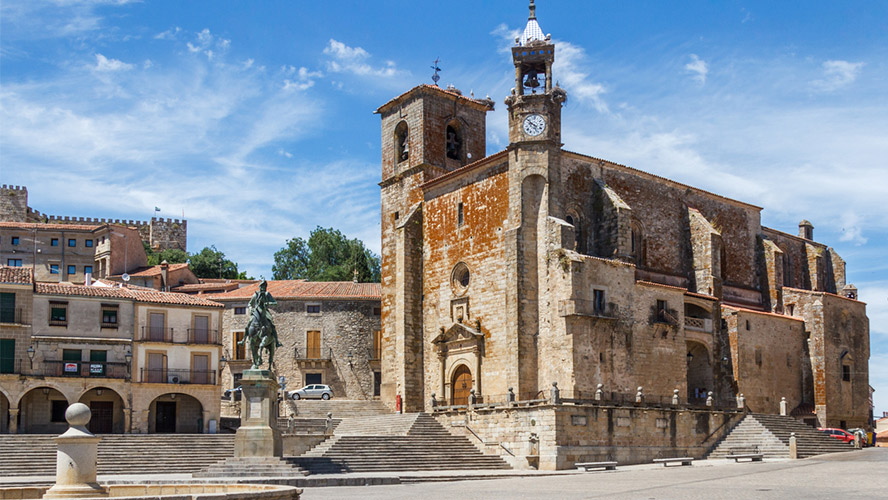
Zafra
This is one of the most picturesque towns in the province of Badajoz. Zafra has a long tradition in livestock farming, something still evident in its Feria Internacional de Ganado [International Livestock Fair], which is considered the most important such fair in Europe. Zafra’s heyday was back in medieval times, when it served as the frontier between the Arab kingdoms of Seville and Badajoz.
One of the greatest attractions that still survives from that period is the fifteenth-century Alcázar Palacio de los Duques de Feria. The streets of Zafra are packed with houses with attractive patios, monasteries and brightly coloured façades, and are paved with traditional cobblestones. After the conquest of America, the town became a highly prosperous trading post, and the livestock fairs and markets sprang up. Also of interest are the Plaza Grande and the Plaza Chica, the Cubo and Perez entrances, the Candelaria church and the convent of Santa Ana.
Las Hurdes
Despite being an area that has inspired many legends on the themes of misery and isolation — for example, the Luis Buñuel film ‘Tierra sin pan’ [Land without Bread] — Las Hurdes enjoys a particularly beautiful natural setting. Here you will find small hamlets that retain the slate and stone rural architecture known as ‘black architecture’ Towns and villages such as Aceitunilla, El Gasco, Riomalo de Arriba and Ovejuela are fine examples. The area’s scenery ranges from Extremaduran meadow to more mountainous landscapes with deep valleys, such as Meandro de Melero. The area is also scattered with pretty streams and waterfalls, including the Chorro de Miacera o la Chorrera de Arrobatuequilla.
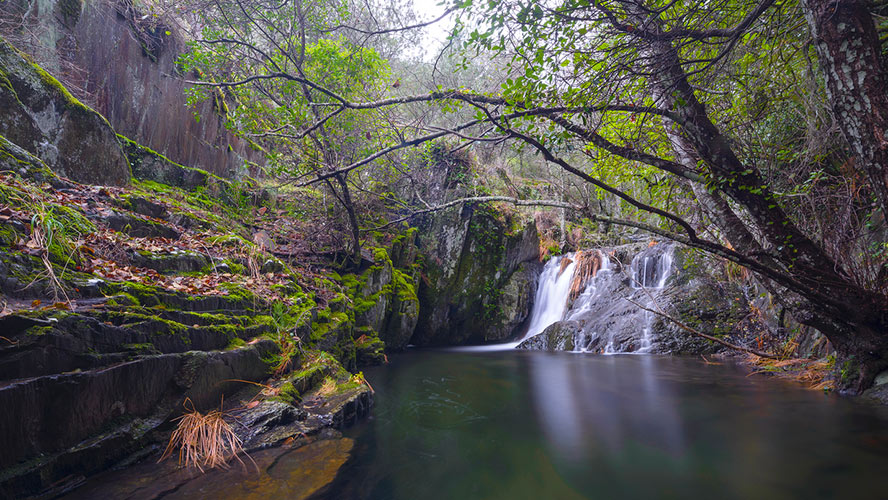
Garganta de los Infiernos
The Garganta de los Infiernos [Mouth of Hell] Nature Reserve lies in the valley of the Jerte, between the Sierra de Gredos and the river Jerte. The area has lots of cascades and waterfalls, thanks to the abundance of streams and springs. Two of the most interesting sights are Los Pilones and the Chorrero de la Virgen. If you want to visit them, they are included on several hiking trails, so you can explore them and enjoy their magical surroundings.
Guadalupe
The origins of this lovely town in the province of Cáceres are said to date back to the discovery, by a peasant, of a portrait of the Virgin of Guadalupe in the thirteenth century. According to the legend, it had been hidden since the eighth century to keep it safe from the Muslims. A hermitage was built on the site of the discovery, and in 1340, King Alfonso XI granted the land to the town that had grown up around it, thereby founding the town of Guadalupe.
The town’s main tourist attraction is the fifteenth-century monastery of Guadalupe, which has been designated a World Heritage Site by UNESCO. The monastery has been witness to historic events, such as several visits by Queen Isabel la Católica and the baptism of two natives brought back by Christopher Columbus from his first expedition to America. It contains several museums and former monastic rooms.
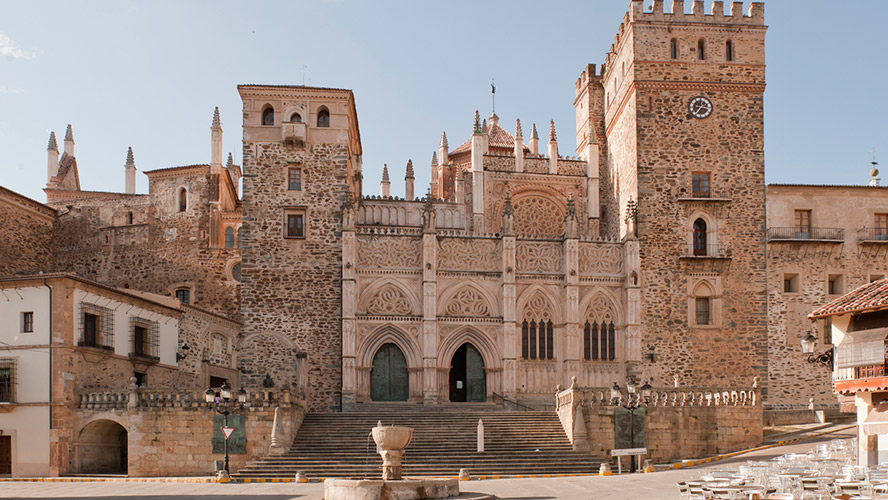
Alcántara
This town in the province of Cáceres is a hidden gem. Here the Festival of Classical Literature is held, but the town’s main attraction is its imposing Roman bridge, which spans the river Tagus, and was built in the time of the Emperor Trajan to enable the transportation of metals. Five robust pillars and six semicircular arches lend the structure a glorious majesty. Alongside it are the remains of an ancient Roman temple. Perched on a hill, the town has other attractions worth visiting, such as the Conventual de San Benito, a striking, sixteenth-century edifice, the Plaza de la Corredera and the church of Santa María de Almocóvar, a jewel of the Extremaduran Romanesque period.
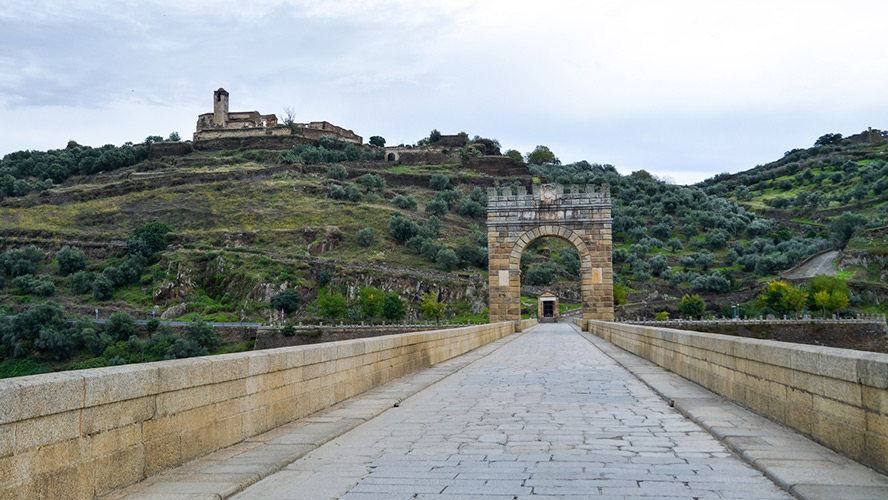
Hervás
In the Valle del Ambroz, in the province of Cáceres, lies the town of Hervás. It has an old Jewish quarter that has been declared a Site of Historic and Artistic Interest. Its streets have lots of adobe houses with wooden latticework and attractive balconies. An interesting fact: Travesía del Moral is the narrowest street in Spain, barely half a metre wide. In addition, on a visit to Hervás you shouldn’t miss stopping off at the church of Santa María, built on the site of a former Templar castle.
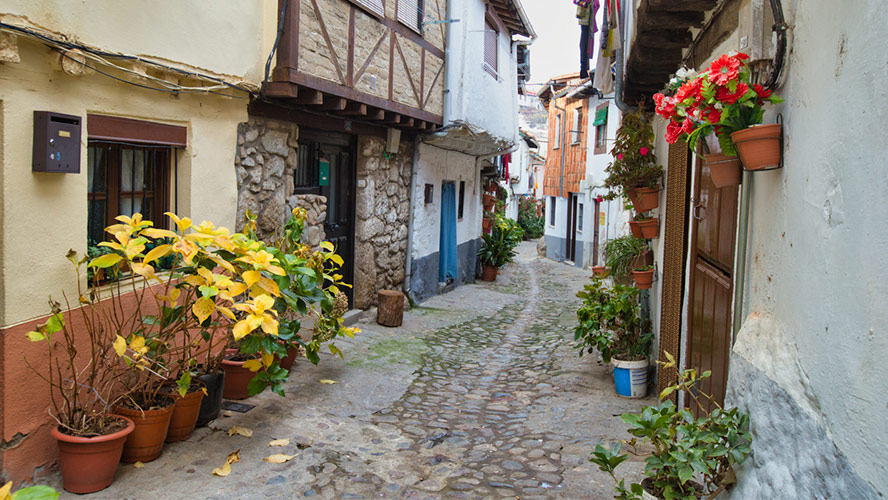
Parque Nacional de Monfragüe
Monfragüe is a great National Park that has been declared a UNESCO World Biosphere Reserve. The Park covers 18,000 hectares, and is well known by those interested in birds of prey, thanks to the abundance and variety of species that live here. The imperial eagle, the black vulture, the peregrine falcon, the eagle owl and the black storks live at ease among the woodland flora, Mediterranean scrub, and the meadows of cork and holm oak trees. The area is a world hotspot in terms of ornithology. There are plenty of viewing points from which you can watch for all these birds, including the Mirador del Salto del Gitano, the Mirador del Castillo and the Mirador de la Serrana. There are also several hiking trails through the park which, like the Doñana park, is considered the National Park with the greatest diversity of wildlife in Europe.
